DJI Neo 2 review: The best beginner drone just got sharper, smarter and safer
The world’s best drone maker returns with a smarter, safer, and more cinematic upgrade to its lightest flyer yet

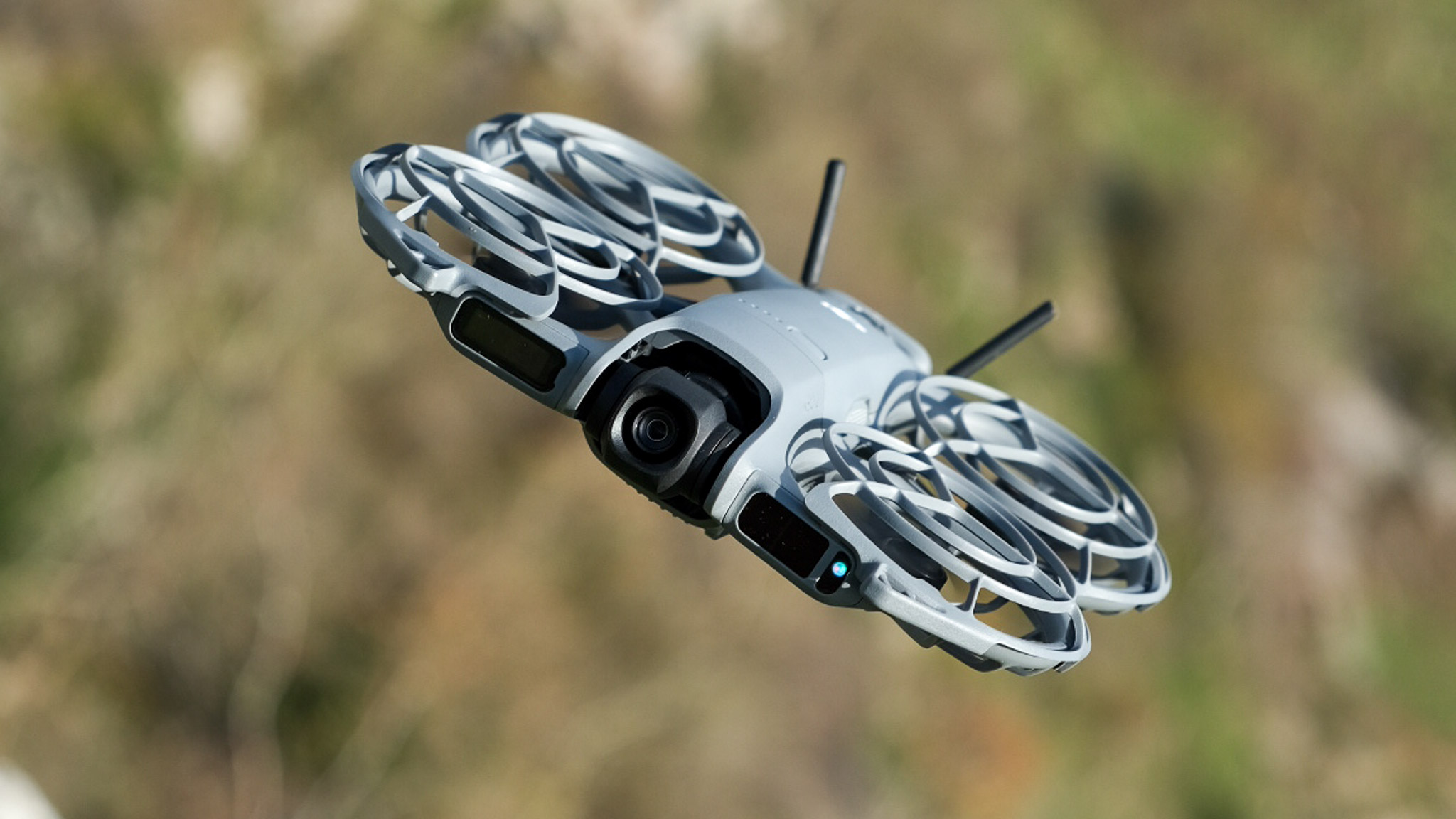
The DJI Neo 2 is a huge leap for such a tiny drone. It’s safer, smarter, and shoots far smoother video than before, with a design that’s still brilliantly portable. The Neo 2 proves you don’t need a full-sized drone to get pro-level footage, just DJI’s latest magic mini.
-
+
Dual-axis gimbal for smoother video
-
+
Excellent LiDAR obstacle sensing
-
+
Intuitive gesture and voice control
-
+
Compact, sub-250 g design
-
+
Fast Wi-Fi transfer and generous storage
-
-
Buttons too close together
-
-
Short flight time
-
-
No true vertical video
-
-
Slightly higher price than Neo
Why you can trust T3

DJI is releasing new products like there’s no tomorrow. The dust hasn’t even settled on the Mini 5 Pro, and the world’s best drone maker is already back with another bombshell, the successor to the dinky DJI Neo, launched just 14 months ago.
The Neo 2 is anything but a minor iterative update. It adds a new dual-axis mechanical gimbal, 4K video at up to 60 fps, omnidirectional obstacle sensing (LiDAR + IR), increased internal storage (~49 GB), improved flight stability, stronger wind resistance, and more.
Despite the improvements, it’s hardly any bigger than its predecessor; in fact, it's seven grams lighter. Yes, it’s more expensive, but it’s still one of the most affordable DJI drones in existence – not to mention, it’s still the best drone for beginners, thanks to its intuitive gesture and voice control features and small size.
I’ve been flying the DJI Neo 2 for weeks, and it has grown on me since the day I took it out of the box. The camera is so much better than before, and the LiDAR obstacle-sensing at this price is mind-blowing. If you want an affordable drone that actually gets the job done, you need the Neo 2.
DJI Neo 2 review
Price and availability
The DJI Neo 2 is available now at DJI and authorised retail partners across Europe and the UK. The standard drone-only package costs £209 / from €239, while the Fly More Combo, which adds two extra batteries and a three-bay charging hub, starts at £349 / from €399. DJI also offers a Motion Fly More Combo, pairing the drone with its motion controller and FPV-ready goggles for £509 / from €579.
This means the Neo 2 launches at about £40 more (≈24% increase) in the UK and €40 more (≈20% increase) in Europe than the original Neo.
Official US pricing hasn’t yet been listed on DJI’s store (the situation is currently in flux in the country), but early retailer data suggests a starting point of around $259, putting it comfortably below the Mini SE and well under the $300 threshold. Australian retail listings are beginning to appear at roughly AU$579 for the standard model, in line with international conversion rates once taxes are included.
Get all the latest news, reviews, deals and buying guides on gorgeous tech, home and active products from the T3 experts
As with all new DJI drones, the Neo 2 is supported by DJI Care Refresh, a comprehensive protection plan covering accidental damage, collisions and flyaways. The one-year plan includes up to two replacements, while the two-year plan covers up to four. Both include official warranty coverage and free shipping for replacements.
Design and build quality
The DJI Neo 2 feels like a solid refinement of the original Neo’s compact charm. At 151 g, it’s seven grams lighter (!), yet the chassis feels sturdier thanks to an improved composite frame and the seamless integration of a full prop-guard design.
The guards now curve smoothly into the arms, giving the drone a cleaner silhouette while offering genuine 360-degree protection, which, to be fair, was also the case with the Neo. This feature makes the successor feel reassuringly durable when flying indoors or around unaware people.
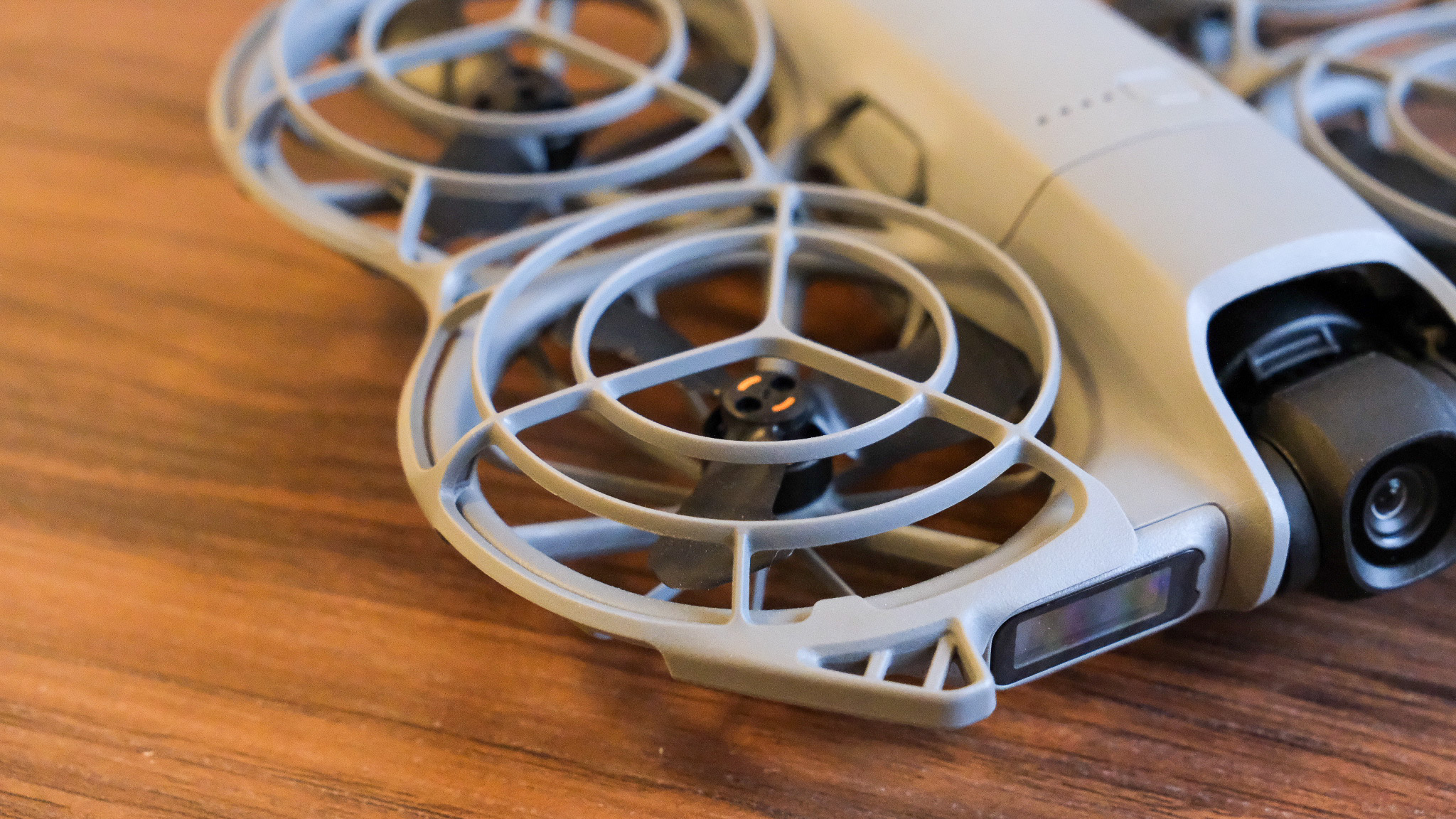
DJI also added a tiny status display on the left side of the lens, showing battery level, shooting mode, and connectivity at a glance. This is an excellent ergonomic update. The original Neo had an LED-based setup at the top of the drone, which meant you couldn’t select a mode and fly it without moving its position.
The new front display and button layout change this. You’ll find three buttons on the right just under the propellers, allowing you to select a programme and fly the drone without rotating your hands.
A slight caveat with the button layout is that they all feel similar and are positioned too close to each other. I often found myself flipping the Neo 2 over to see on which button my finger was resting, which admittedly diminishes the benefit of coming up with this otherwise excellent setup.

I would move the selector rocker to the other side of the drone, and move the I/O button further back to make it easier to locate with your thumb. I might even add a larger, circular silicone cover to make it even easier to interact with it.
The front now houses twin LiDAR and monocular sensors, part of the new omnidirectional obstacle-sensing system, a huge upgrade from the Neo, which had neither. Together with downward infrared, these allow the Neo 2 to hold its position far more confidently than its predecessor.
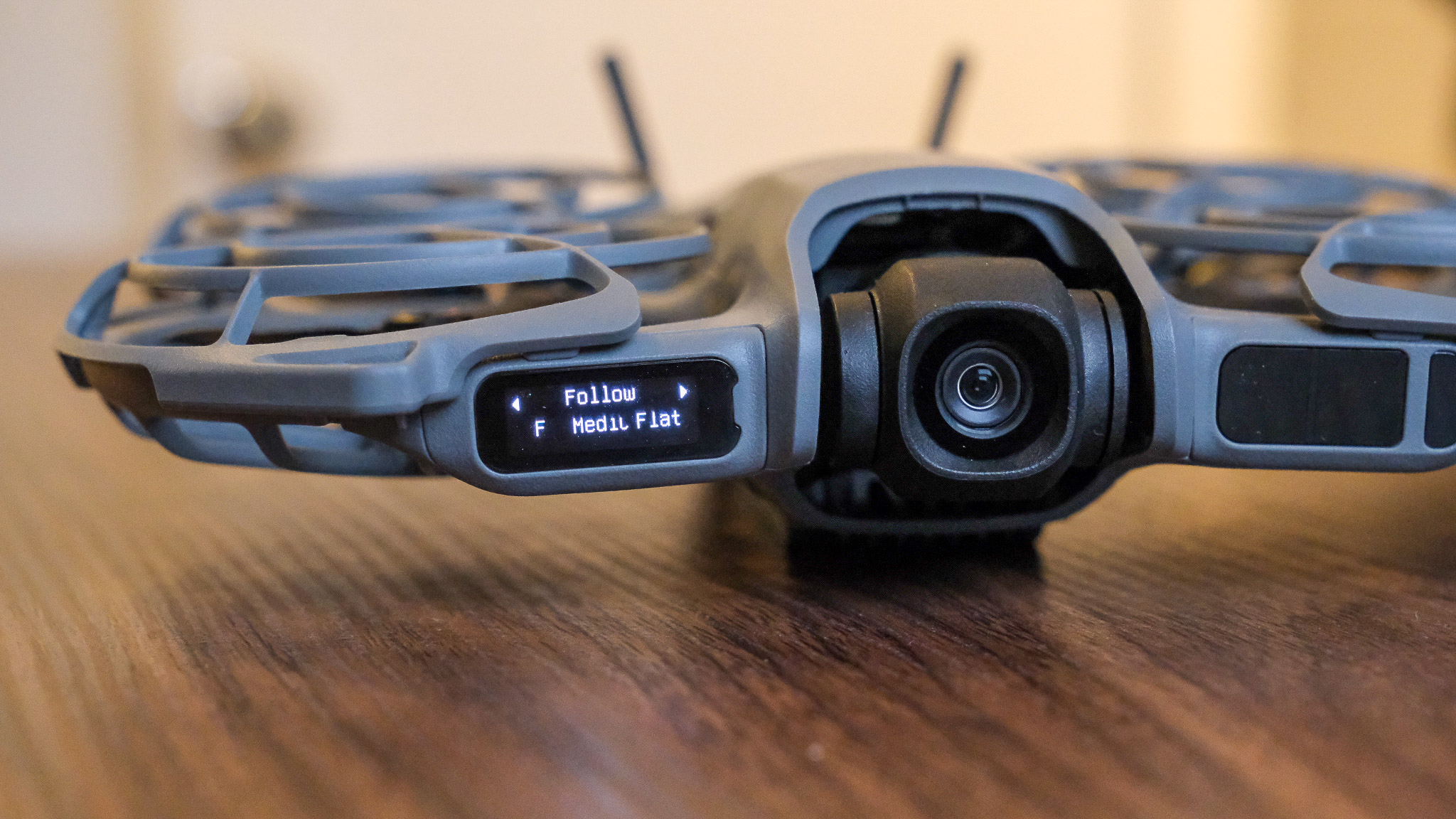
Despite the added sensors, the Neo 2 remains impressively compact at 147 × 171 × 41 mm, making it only slightly larger than the original Neo (130 × 157 × 48.5 mm). The increase in width and length gives it a steadier footprint in the air, while its reduced height and take-off weight keep it effortlessly portable and well under the 250 g registration threshold.
The fixed-arm design feels more solid and ready-to-fly than folding drones: no hinges, no unfolding, just grab-and-go. It still slips easily into a small camera pouch or backpack side pocket.
DJI also doubled internal storage from 22 GB to 49 GB and added Wi-Fi transfer at up to 80 MB/s, eliminating the cable dance that slowed the original Neo. Footage moves quickly to your phone and drops straight into the Fly app for editing. The app even offers to download content if it senses the Neo 2 has fresh footage.
Camera performance
The Neo 2’s camera might look familiar on paper – it still uses a 12 MP 1/2-inch CMOS sensor – but the upgrades beneath the surface make a real difference in how footage looks and feels.
DJI has paired that sensor with a wider f/2.2 aperture and a faster image processor, resulting in noticeably cleaner, more balanced footage, especially in mixed or low light. The colours are more natural and skin tones less plasticky than on the original Neo, which tended to crush shadows and blow out highlights.
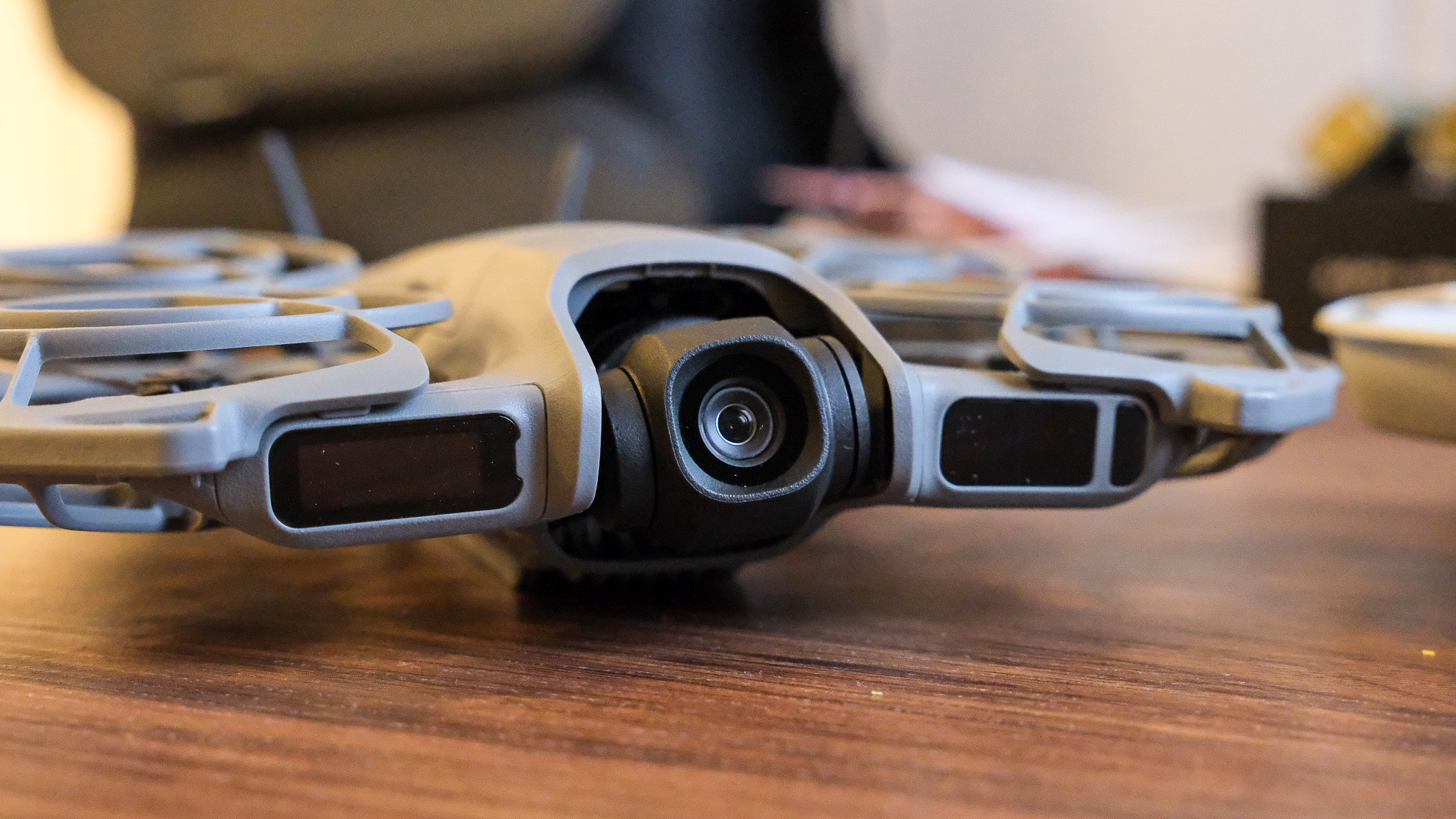
Perhaps the most meaningful upgrade is mechanical. The Neo 2 swaps the Neo’s single-axis tilt gimbal for a new 2-axis system that adds roll stabilisation. Combined with DJI’s digital RockSteady-style smoothing, the result is far steadier footage when banking or tracking moving subjects, something the first Neo often struggled with. Even quick pans and sharp turns look cinematic rather than jerky.
Video capture now tops out at 4K@60fps (with a 100fps slow-motion option) – a massive step up from the Neo’s 4K 30 fps ceiling, and it opens the door to more expressive, dramatic shots. The Neo 2 also adds a 2.7K vertical-video mode for social content, which isn’t quite the DJI Mini 5 Pro’s true vertical mode, but for the price, it’s still impressive.
The ActiveTrack 360° system has been upgraded, too, with faster recognition and a new eight-direction tracking matrix (forward, backward, lateral and four diagonal). It locks on more quickly and maintains framing with far fewer wobbles when the subject changes direction.
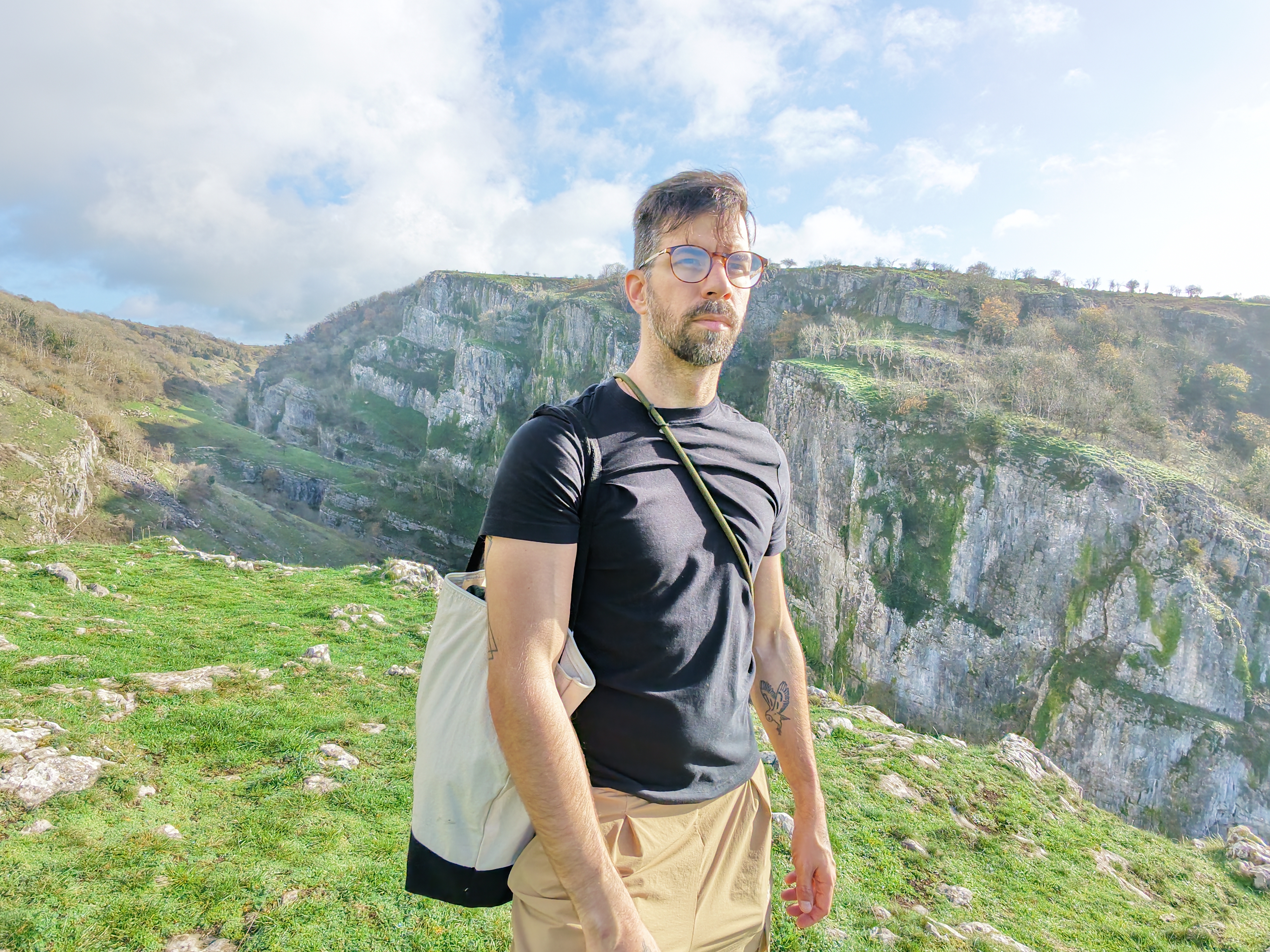
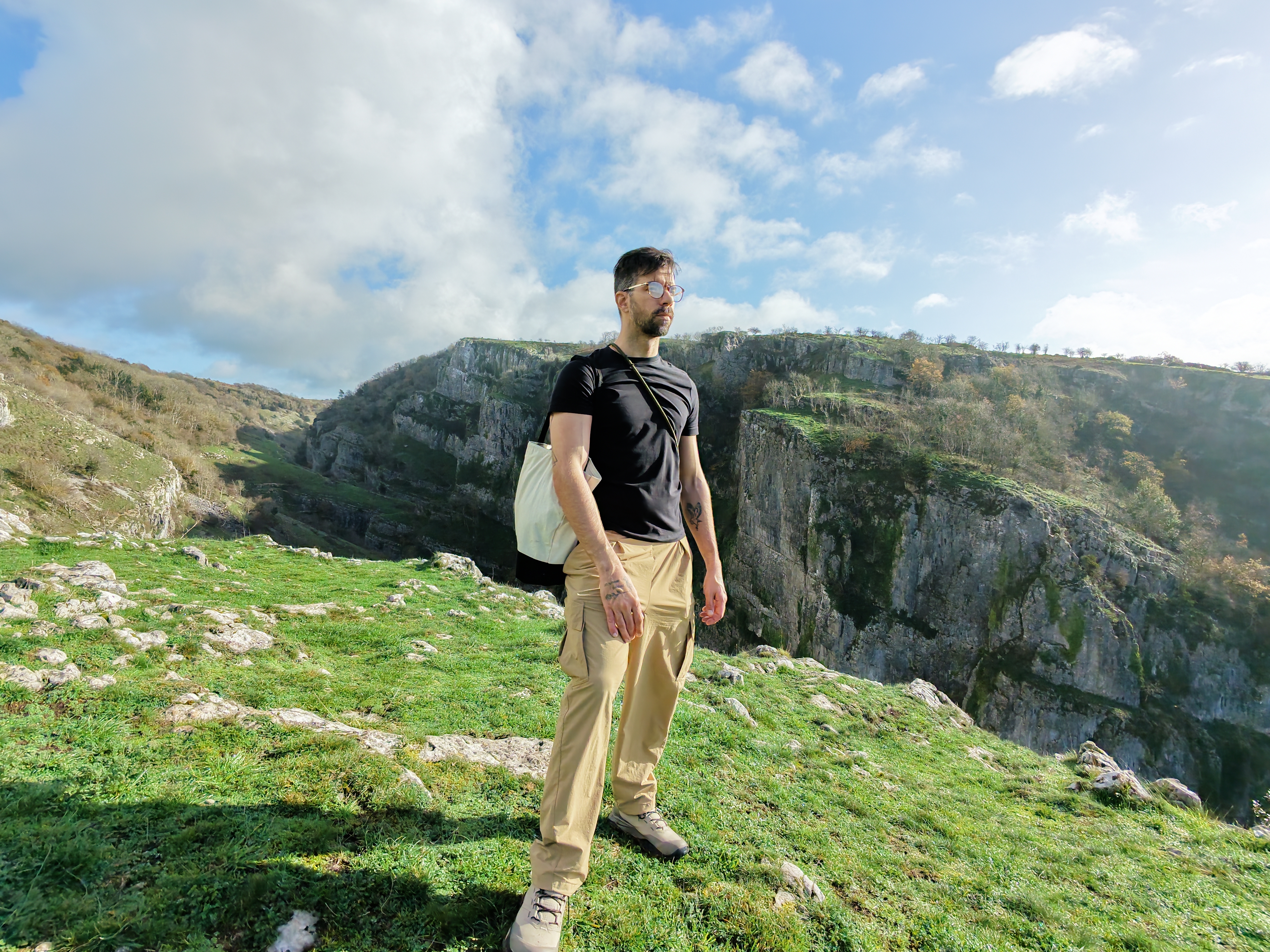
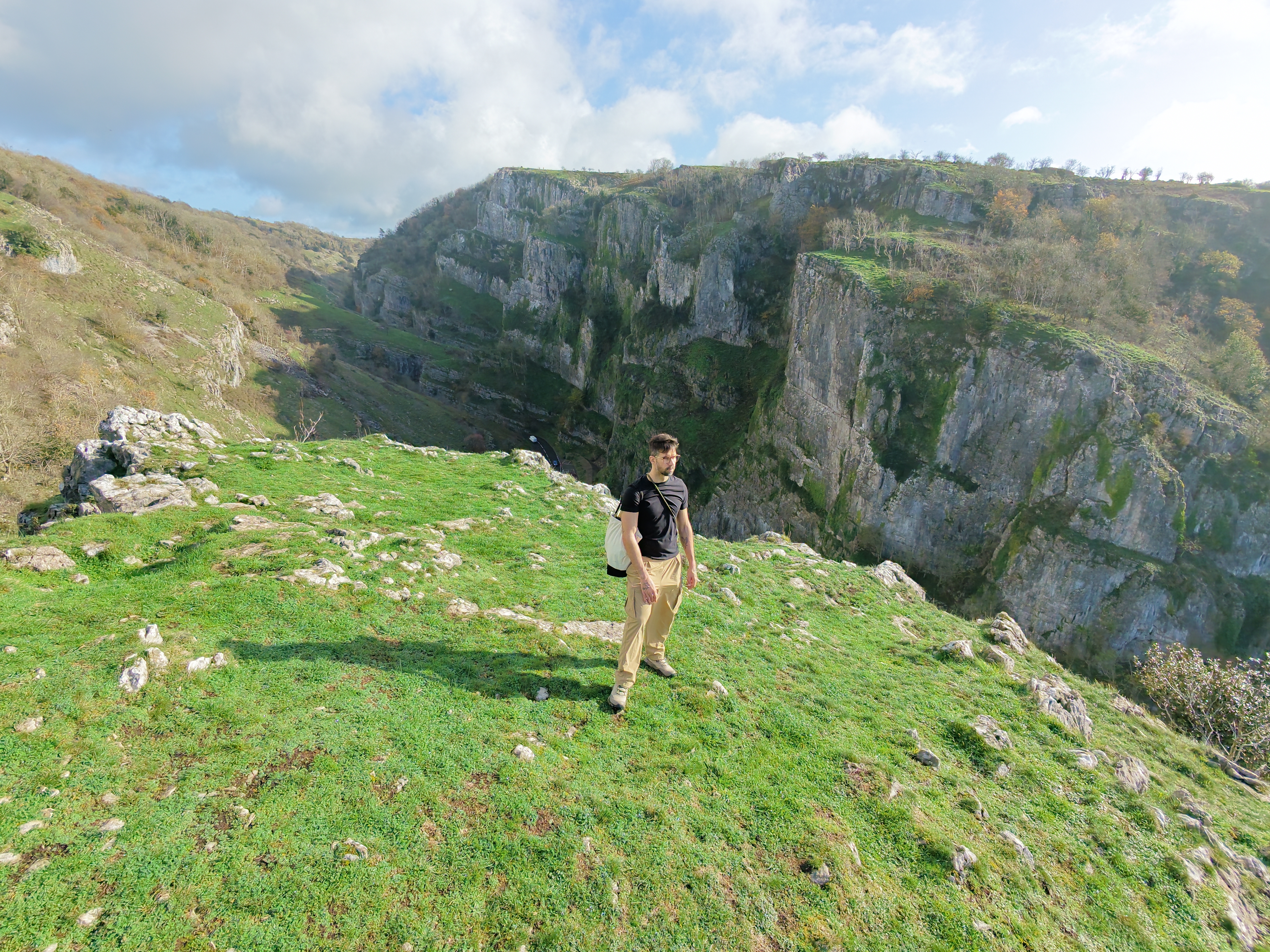
The drone retains the same crisp 12 MP stills, albeit with a smoother tonal curve and better dynamic range. Pair that with the new SelfieShot feature, which automatically reframes between waist-up, full-body and long shots, and the Neo 2 starts to feel like a mini camera operator rather than a flying toy.
Intelligent shooting modes return with a few smart additions. MasterShots and QuickShots now take advantage of the wider frame rate options, while Dolly Zoom adds a surprisingly effective faux-Jaws effect. Each can be activated with a tap or a gesture, and the drone’s new onboard display confirms your selected mode before take-off.
Flight performance
The first Neo was easy to use but occasionally twitchy in wind or near obstacles; this model feels like DJI has ironed out all those beginner quirks.
Much of that comes down to the new omnidirectional obstacle-sensing system, which combines forward-facing LiDAR with a network of monocular and infrared sensors to map the surroundings in real time. The result is a far steadier hover and smoother, more confident navigation, even at low altitudes or around trees and buildings.
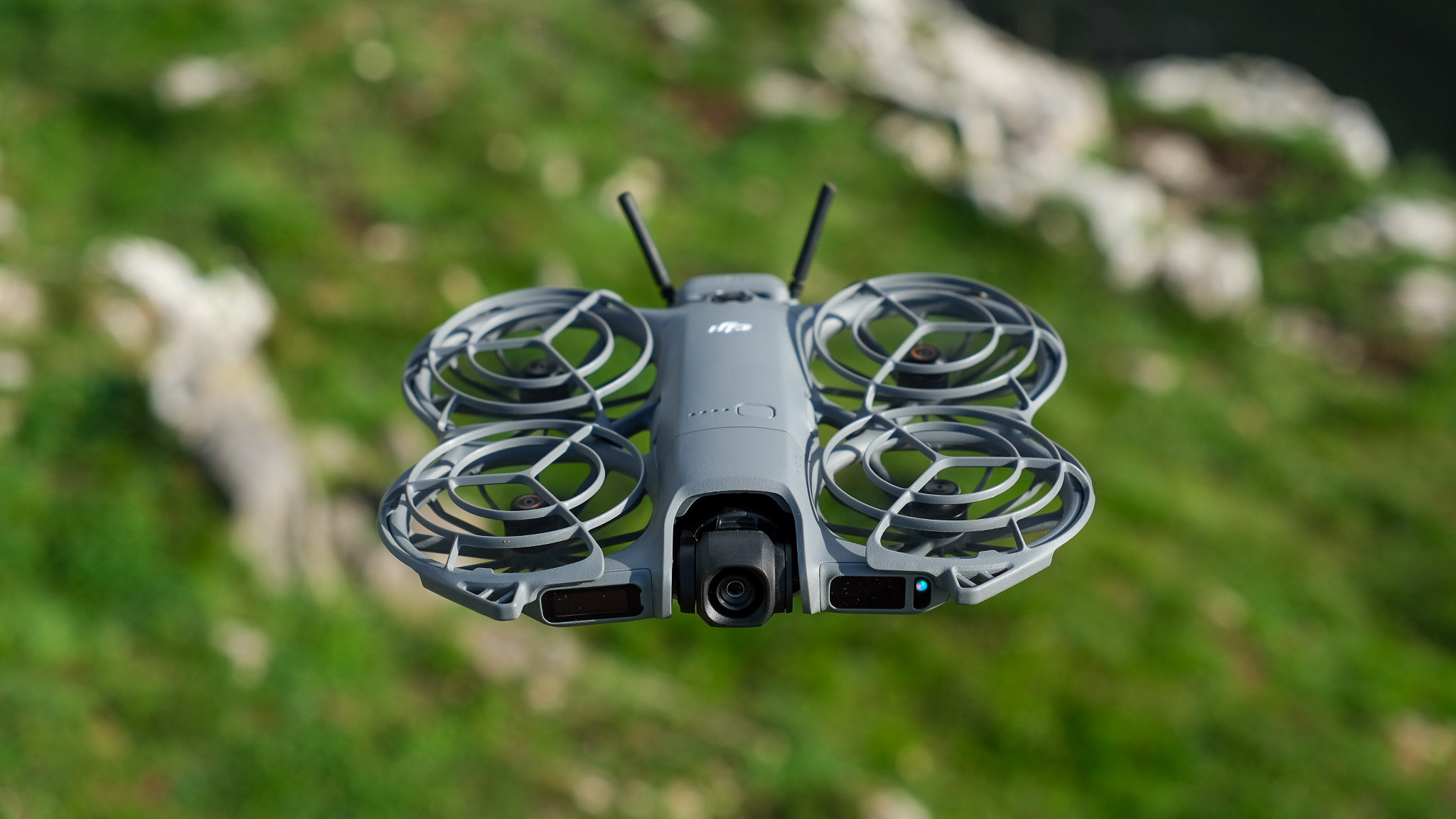
Despite its compact dimensions, the Neo 2 holds position with uncanny precision. The wider stance gives it a more stable footprint in the air, while subtle tuning in the motors and flight controller makes it more responsive to input. It feels balanced, predictable and remarkably forgiving for newcomers.
In flight, the difference in control smoothness is immediately obvious. DJI says the Neo 2 can track at speeds up to 12 m/s, and while you’re unlikely to hit that in typical use, the extra power is noticeable when you let it chase a cyclist or runner in ActiveTrack 360° mode.

The tracking algorithm now supports eight-directional movement (forward, backward, lateral and diagonal) so the drone adapts naturally to changes in movement without swinging wildly to reframe the subject.
I found the gesture and voice control options are genuinely usable, not just party tricks. With simple hand movements, you can adjust altitude and direction, or command the drone to take off, land, and start recording. Better still, you’ll feel like a Jedi master, controlling the Neo 2 with your outstretched hand.
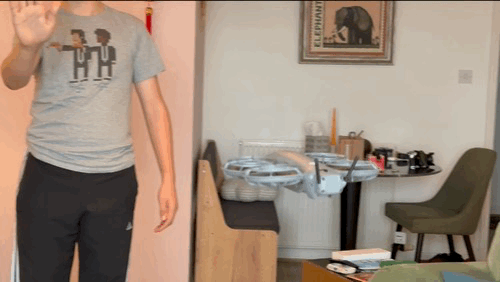
The blue indicator light, which lights up when the Neo 2 recognises your hand, provides excellent feedback. You can move the drone up, down and from side to side with one hand, and use two hands to increase or decrease the distance between you and the Neo 2. It’s all very intuitive and feels rather cool, too.
Voice commands sent through a smartphone or Bluetooth headset make it even more flexible when your hands are full. You can also use any of DJI’s portable microphones to record audio while filming, just like in the case of the original Neo.
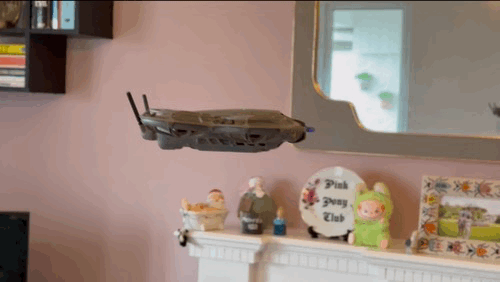
One of the most enjoyable touches is the Return-to-Palm feature. After a flight, the Neo 2 will precisely locate your outstretched hand and land itself with smooth, deliberate confidence. It’s the kind of human-centric detail that turns a clever gadget into something that feels alive.
Battery life and charging
Battery life isn’t the Neo 2’s headline act, but it’s quietly improved in all the right ways. DJI quotes up to 19 minutes of flight time, just a minute more than the first Neo, though in practice, you’re looking at around 15 to 17 minutes maximum depending on wind and how often ActiveTrack or gesture control is used.
The redesigned battery locks more securely into the body, eliminating the slight play some Neo owners noticed over time. It also charges faster thanks to improved thermal management and updated circuitry. A full top-up via USB-C takes just over 40 minutes, which makes back-to-back flights entirely possible with a second pack.

The Fly More Combo bundles two extra batteries and a three-bay charging hub that automatically prioritises the lowest-charged cell, so you can cycle through all three without micromanaging charge levels.
DJI’s integration of intelligent battery tech, including real-time temperature and voltage monitoring, means you get fewer unexpected drop-offs and better long-term health. The LED indicators on the rear of the pack are easier to read in bright light, and there’s a reassuring click when you seat it into place.
Verdict
I love the DJI Neo 2. It’s a fuss-free beginner drone for hobbyists who care more about ease of use than anything else. It’s more than affordable still, and can be used without a controller, which helps keep the price down.
It’s a lot more competent than its predecessor, yet it’s still lightweight and uncomplicated, making it a top choice for younger pilots as well as athletes who want a drone that can actually follow them around during their preferred sports.
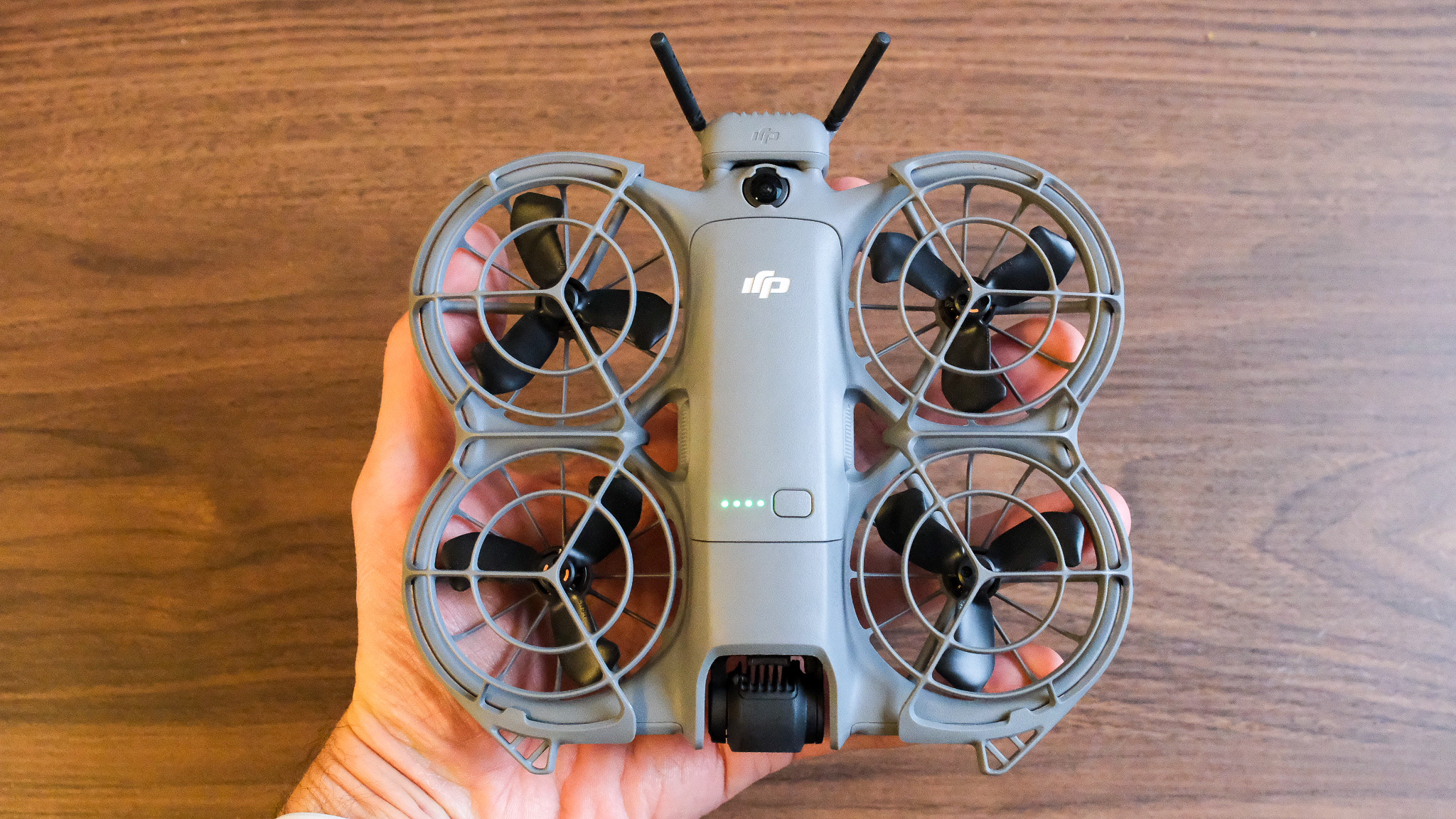
Camera performance is a lot better than before, and it’s also a lot safer to fly the Neo 2, thanks to the omnidirectional sensing system. Hand gesture control is truly my favourite way to position the drone, and the new button and display layout is much more ergonomic than before (although the former could still be improved).
There really is little to nothing to criticise about the DJI Neo 2. It’s highly recommended for this Christmas and beyond.

Matt Kollat is a journalist and content creator who works for T3.com and its magazine counterpart as an Active Editor. His areas of expertise include wearables, drones, fitness equipment, nutrition and outdoor gear. He joined T3 in 2019. His byline appears in several publications, including Techradar and Fit&Well, and more. Matt also collaborated with other content creators (e.g. Garage Gym Reviews) and judged many awards, such as the European Specialist Sports Nutrition Alliance's ESSNawards. When he isn't working out, running or cycling, you'll find him roaming the countryside and trying out new podcasting and content creation equipment.
You must confirm your public display name before commenting
Please logout and then login again, you will then be prompted to enter your display name.